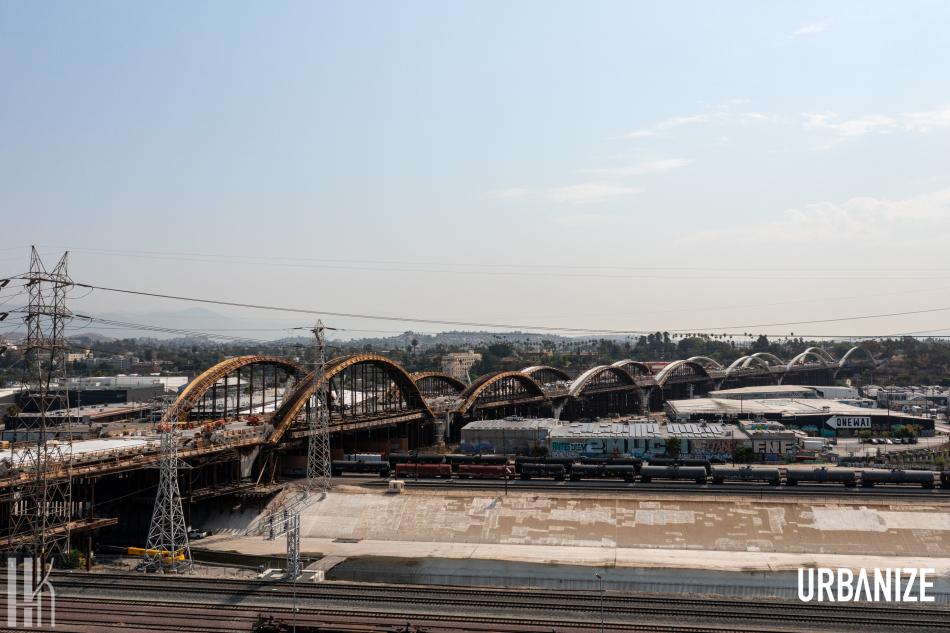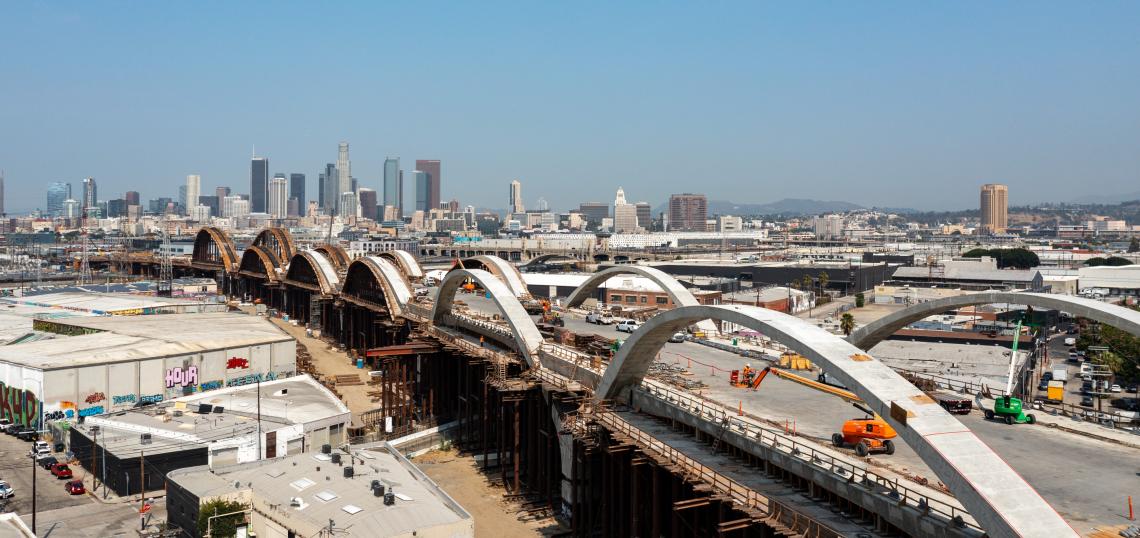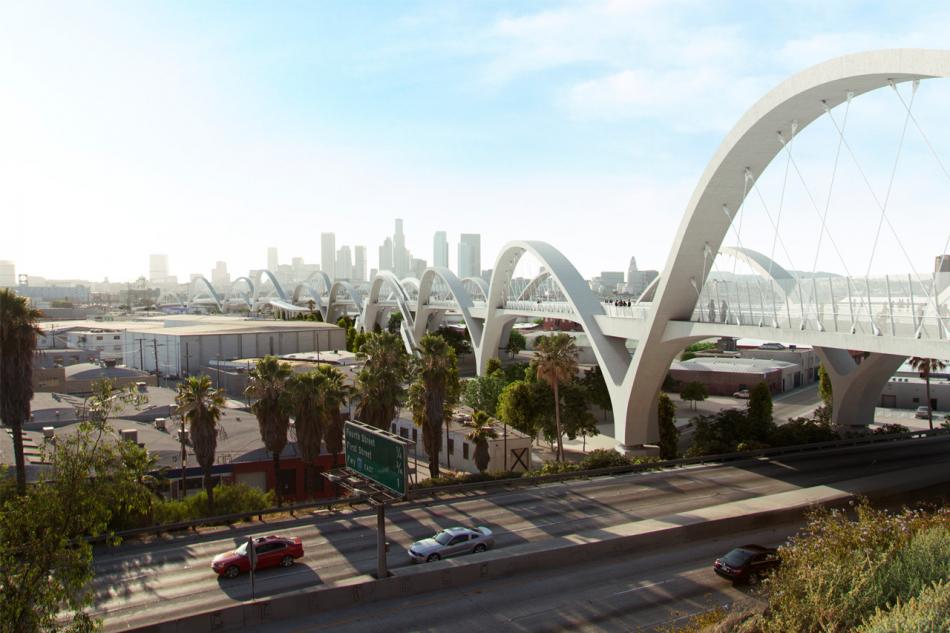Almost six months after we last stopped by, concrete and rebar have started to fill out of the forms of the 10 arches that will compose the new Sixth Street Viaduct.
The 3,500-foot L.A. River crossing, which will span from Downtown Los Angeles to Boyle Heights, replaced a 1932 viaduct of the same name which was demolished five years ago due an alkali-silica reaction – colloquially known as “concrete cancer” - which made it susceptible to collapse during an earthquake.
Designed by architect Michael Maltzan, the $500-million replacement viaduct's new arches reference to the twin metal structures that were the architectural signature of the original Art Deco bridge. But unlike its predecessor, the new viaduct will feature provide dedicated multi-use paths along both sides of the roadway, including stairways and access ramps for cyclists and pedestrians.
Another change from the original viaduct is the addition of green space. The new viaduct will be accompanied by more than 12 acres of new green space below the bridge in both Boyle Heights and the Arts District. The park land, designed by Hargreaves Associates, is scheduled to break ground in 2022.
 View of the Sixth Street Viaduct looking east toward Boyle HeightsHunter Kerhart Architectural Photography
View of the Sixth Street Viaduct looking east toward Boyle HeightsHunter Kerhart Architectural Photography
Likewise, the Los Angeles Bureau of Engineering currently estimates that the roughly $500-million viaduct will also open in 2022 - a delay of three years from the project's original scheduled completion date.
In addition to providing a crossing for motorists, pedestrians, and cyclists between Boyle Heights and Downtown, the new viaduct could also anchor another piece of transportation infrastructure. Metro is currently considering an extension of subway service into the Arts District from Union Station, with a new terminus planned along the banks of the L.A. River at 6th Street. The Los Angeles City Council's Transportation Committee recently voted to fund the project using Measure M returns.
- Sixth Street Viaduct (Urbanize LA)








